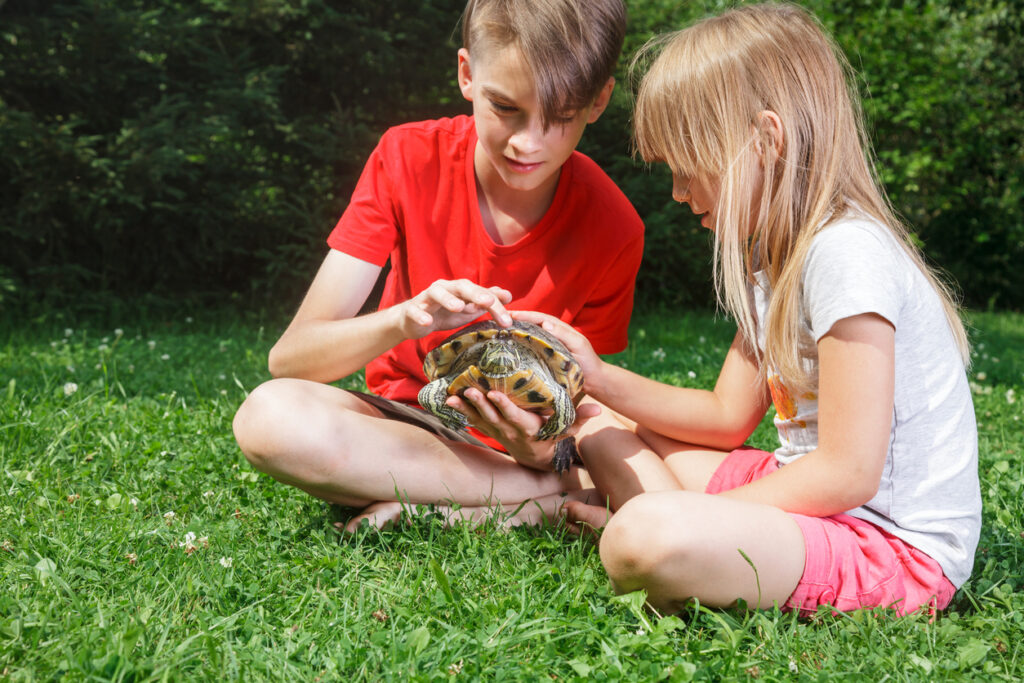Have you been thinking about getting a pet? Maybe you’d like a little company, or you have a child who’s excited to take on the responsibility of caring for an animal. Either way, adding a pet to your family can be very rewarding. It’s also—as all of our parents liked to remind us—a lot of responsibility.
It is important to make sure you have the time, space, and resources to care for your new furry, finned, or feathered friend. But some are easier than others. Here are 5 affordable pets to consider—most of them don’t need a lot of space or too much time. And with some smart shopping, food and supplies can be pretty affordable.
The only other thing to consider is veterinary costs—an annual wellness check for animals that need one (like a cat or bird) will cost around $60. It’s also a good idea to have an emergency fund in case they become ill or injured.
- Bird
Larger birds, like parrots, can be very expensive and need a lot of interaction. But many smaller ones, like finches or canaries, are mostly content to do their own thing in their cage.
If you want a bird that can potentially be tamed and sit on your shoulder, a parakeet is a good option—as long as you have 20-30 minutes or more to spend with it each day.
To care for a bird, you’ll need a small cage (they typically cost between $30-$50 at sites like Chewy or Amazon and come with food and water dishes and perches. Then you’ll just need parakeet pellets and a seed mix to feed them, and then try to give them some greens or fresh fruit a few times a week as well. The weekly cost to feed a small bird is about $2-$3.
- Fish
If you’re interested in a fish as a pet, as long as you get one that doesn’t need a heater, you can keep costs very low—they’re one of the most affordable pets around. The classic choice is the goldfish, and they’re very inexpensive. Expect to pay $2-$10, depending on how big or fancy you want it to be. (If there’s a school carnival happening soon near you, you might even be able to win one!) A goldfish just needs a bowl with room temperature water, and you can buy enough fish food to last a year or more for around $8.
- Rat
Rats get a bad rap, but they can actually be excellent and affordable pets. They’re smart, easy to tame, and are actually very clean animals.
To bring a rat into your family, you’ll need to get a cage. You can generally find one for $40-$50 on Amazon or Chewy. If you want to spend less than that, it’s usually easy to find used cages on Craigslist—you’ll just want to make sure you properly disinfect it to keep your new pet safe from disease.
You’ll need to feed your rat pellets, which cost about $10 a pound, and that will last about a month per rat.
- Cat
A cat is an interesting pet because they’re usually fairly independent, but they’re also very intelligent and can be more affectionate and interactive than the other animals on this list.
A cat doesn’t need a cage, but you’ll want to make sure you’re okay with it being loose inside your house. The best place to get a cat or kitten is from an animal shelter or rescue group near you—they’ll generally charge you a small adoption fee, which varies by organization.
When you bring your new feline friend home, you’ll need food and water bowls and a litter box, as well as a scratching post and some toys. All of that should cost around $40-$80.
A 4.5-pound bag of dry cat food costs about $20, and will last around 6 weeks—so your monthly cost will be about $14.
- Box turtle
A box turtle might be the one of the most affordable pets and easiest to care for. You can just let them loose in your backyard, and they’ll eat snails and insects. They’re not going to come when you call them, but most will learn to take food from your hand and some even like to have their heads rubbed. They cost about $25-$40, and can live 25-30 years!
There are two important things to know about box turtles: first, they dig, so you’ll need to put some landscape cloth a few inches into the ground at your fence line if you want to keep them from wandering off. (It’s also a good idea to paint your phone number on their shell in case they do end up out in the world.)
Second, they hibernate. So your pet will be out of commission from about October to April. If they’re outside, they’ll bury themselves in leaves and dirt, so you’ll want to make sure no humans or animals will interfere with them. If you’d rather keep them inside, you can put them in a dark, well-ventilated place like a box or a drawer where they won’t be disturbed. When spring comes, they’ll wake up and rejoin the land of the living.









